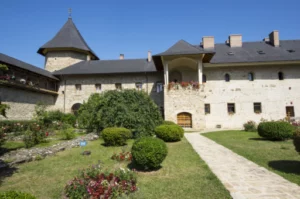San Antonio: Unpacking the Dynamics of Early Voting on the Eastside
As the sun rises over San Antonio, excitement fills the air as early voting kicks off today! Voters are eagerly preparing to cast their ballots in what is expected to be a historic election cycle. This year, Bexar County is seeing unprecedented changes, particularly on the bustling Eastside, where ongoing demographic shifts and voting trends are taking center stage.
Long Ballots Await
For those planning to vote early, be prepared for a bit of a marathon. Bexar County officials are encouraging voters to brace themselves for the longest ballot in county history. Voters can expect to click through as many as 59 different screens, making it essential to stay aware and keep patience in check. Local election volunteers have been diligently setting up polling places, ensuring that everything is in order for the big days ahead.
Historical Context of the Eastside
San Antonio’s Eastside has a rich history that reflects the broader narrative of the United States. Despite its reputation for being a hub of racial diversity with a significant Black population, demographic patterns reveal a mixed picture. Historical segregation has played a pivotal role in shaping the community’s identity. After emancipation, the Eastside became home to the city’s first African-American settlement, reflecting a long legacy of resilience and community spirit.
Fast forward to today, and while the Eastside remains home to a vibrant mix of cultures, recent trends indicate a shift towards a predominately Hispanic/Latino population alongside a notable African American presence. It’s vital to recognize how the region’s past continues to influence political leanings and community identity in the current age.
Rural vs. Urban Dynamics
However, not all areas of the Eastside are created equal. Venture out to the more rural regions of Bexar County, and you’ll find cities like China Grove and Saint Hedwig, which tell a different story. Here, the demographic blend changes significantly. With populations that are overwhelmingly white, these areas have shown a stronger support for former President Donald Trump, particularly in the 2020 election.
In China Grove, for instance, only 37.6% of the voters backed Joe Biden, while the number dipped even lower in Saint Hedwig at a mere 17.1%. This reflects a broader trend where rural areas lean more towards Republican candidates, contrasting sharply with the more Democrat-leaning urban centers.
Income and Demographics
Interestingly, these rural communities also showcase robust economic profiles. China Grove boasts an average household income of $131,088, which is notably above the county average of $65,854. Similarly, Saint Hedwig, with its average household income of $117,055, also exceeds regional norms. These economic factors often play a crucial role in shaping political allegiances and casting votes.
The ethnic breakdown in China Grove illustrates that while the population is predominantly white (49.22%), it also includes a small percentage of Hispanic residents (12.23%) and Black (9.22%) individuals, showing a modest degree of diversity. Over in Saint Hedwig, the numbers skew even more towards white residents at 87.59%, with a tiny fraction of Black residents making up just 1.55% of the community.
Looking Forward to Election Day
As early voting unfolds, it’s clear that understanding these voting trends and demographic shifts is crucial for both voters and candidates alike. Engaging in dialogues about community needs is essential as residents weigh their choices at the ballot box. Election integrity and voter safety remain top concerns, and initiatives like Vote210 are stepping up to simplify access to essential election information.
In this spirited atmosphere, one thing is certain: whether you’re rooting for the Eastside to make waves in this election or merely excited to play a part in shaping the future, San Antonio’s diverse world is back in action, ready to cast its votes!








